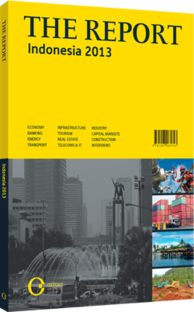Less bounce: Declining rubber output likely due to natural and economic reasons
One of the world’s premier producers and exporters of rubber, Indonesia has been in the trade since the late 19th century when British colonialists distributed seedlings across South-east Asia. From these humble beginnings, Indonesia, Thailand and Malaysia now account for some 70% of global rubber production. Total domestic output for 2012 amounted to 3.2m tonnes, according to estimates from the General Federation of Indonesian Rubber Operators (GAPKINDO), up 7% from the 3m tonnes produced in 2011. Overall production has remained relatively static as total rubber plantation area has remained steady at just over 3.4m ha since 2006, with production fluctuations resulting largely from the vicissitudes of market prices and weather patterns. Since 2007 the country has produced 2.76m tonnes, 2.75m tonnes, 2.44m tonnes, 2.74m tonnes and 3.09m tonnes, respectively, through 2011.
LOWER OUTPUT: Output is expected to drop off in 2012. With the global economic slowdown continuing to dampen industrial demand, rubber prices softened in mid-2012 leading to an accord in August between Thailand, Malaysia and Indonesia to cut supplies in an effort to prop up slumping commodity markets. Following this meeting in Bangkok, the three nations agreed to collectively reduce quarter-four rubber shipments by 300,000 tonnes starting on October 1 in addition to cutting down 100,000 ha of ageing rubber trees.
Declining prices reduced Indonesian exports in the first half of 2012 by an estimated 8% as smallholder farmers reduced tapping, while unseasonably dry weather conditions also negatively affected output. As a result, GAPKINDO estimated total production on the year to fall to around 2.8m tonnes, with exports dipping to 2.1m tonnes. In 2011 Indonesian rubber exports totalled 2.56m tonnes valued at $11.76bn, up from 2.35m tonnes worth $7.33bn the previous year, according to GAPKINDO data. The vast majority of exports were shipped in the form of standard Indonesian rubber (SIR), which accounted for 96.88% (2.48m tonnes) of the total compared to just 67,333 tonnes of ribbed smoked sheet and 9502 tonnes of latex concentrate. Exports have been shifting to SIR and away from rolled smoked sheets (RSS), which are higher maintenance. As a result, RSS exports have declined from 325,393 tonnes in 2006 to current levels of under 70,000 tonnes, while SIR output has grown modestly from some 2.29m tonnes to 2.56m tonnes over the same time period.
PRODUCTIVITY ISSUES: Low productivity is a long-term challenge for the rubber industry, as Indonesian rubber farms still lag behind their regional competitors. “In our country, 85% of the rubber farms belong to small farmers, whereas in Thailand it goes up to 95%,” said Harijadi Soedarjo, president director of rubber producer JA Wattie. “However, in Thailand, thanks to better management and financing, farmers reach productivity levels of 1.5 tonnes per ha per year against 0.8 tonnes per ha per year here. In fact, Thai farmers equal the yields of Indonesian rubber plantation companies.”
IN FIGURES: According to GAPKINDO, smallholder farmers produced a total of 2.49m tonnes of rubber in 2011, or 80.58% of total output, while government and private estates produced just 289,000 tonnes (9.35%) and 314,000 tonnes (10.17%), respectively. Smallholders worked 2.93m ha of land, yielding 0.85 tonnes per ha. By contrast, private estates yield 1.11 tonnes per ha on a smaller total workable area of 284,000 ha, while government estates yield 1.2 tonnes per ha over 240,000 ha. With rubber prices in decline in 2012 and production slashed, smallholders highly sensitive to these price fluctuations may find it an opportune time to cut down their rubber trees in favour of more profitable crops.
You have reached the limit of premium articles you can view for free.
Choose from the options below to purchase print or digital editions of our Reports. You can also purchase a website subscription giving you unlimited access to all of our Reports online for 12 months.
If you have already purchased this Report or have a website subscription, please login to continue.

